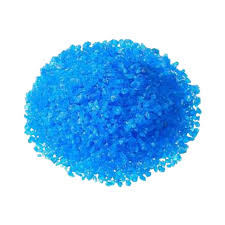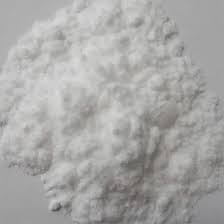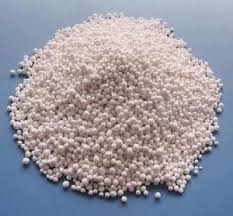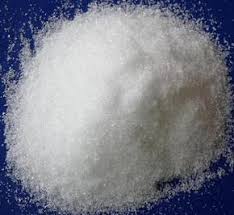
ProductDrop
Copper sulphate (CuSO₄) is a valuable source of copper (Cu), an essential trace mineral for crops and pastures. It provides multiple benefits that enhance plant health and productivity, especially in copper-deficient soils, which can be an issue in some New Zealand (NZ) regions. Below is a concise overview for a grower, including deficiency symptoms and NZ-specific references.
Benefits of Copper Sulphate to Crops and Pastures
-
Supports Enzyme Function and Photosynthesis:
-
Copper is a cofactor for enzymes involved in photosynthesis, respiration, and lignin synthesis, which strengthens plant cell walls.
-
It aids in chlorophyll formation, ensuring efficient energy production.
-
Result: Healthier, greener plants with improved growth rates in crops like cereals and denser pastures.
-
-
Improves Disease Resistance:
-
Copper enhances plant cell wall strength, increasing resistance to fungal and bacterial infections.
-
Copper sulphate is widely used as a fungicide (e.g., in Bordeaux mixture) to control diseases like blight and downy mildew in crops such as grapes and potatoes.
-
Result: Reduced disease incidence, leading to higher yields and better-quality produce.
-
-
Enhances Pasture Quality:
-
In pastures, copper deficiency can stunt grass and legume growth, reducing forage quality.
-
Applying copper sulphate corrects this, promoting vigorous growth and better regrowth after grazing.
-
Result: Increased carrying capacity for livestock and improved nutritional value of forage.
-
-
Boosts Seed and Grain Production:
-
Copper is essential for pollen formation and seed set, directly impacting reproductive success.
-
In cereals like wheat and barley, it improves grain filling; in pastures, it supports seed production in grasses and legumes.
-
Result: Higher grain yields and better seed quality for future planting.
-
-
Corrects Deficiency in NZ Soils:
-
Copper deficiency is common in NZ’s peat, sandy, or highly weathered soils, such as those in the Waikato, Northland, and parts of the South Island.
-
Copper sulphate restores levels, ensuring plants can access this nutrient.
-
Result: Prevents yield losses and maintains consistent productivity.
-
-
Improves Stress Tolerance:
-
Copper supports metabolic processes, helping plants withstand stresses like drought or cold.
-
Result: More resilient crops and pastures, leading to stable yields under NZ’s variable conditions.
-
Deficiency Symptoms of Copper in Crops and Pastures
Copper deficiency shows distinct symptoms, often more pronounced in certain NZ soil types:
-
Wilting and Twisted Leaves: Young leaves may wilt, curl, or twist, seen in crops like wheat, oats, and citrus.
-
Dieback of Shoots: Tips of shoots may die back, particularly in cereals and pasture grasses.
-
Pale or Yellow Leaves: Plants show chlorosis, especially in new growth, due to impaired chlorophyll synthesis.
-
Reduced Yield and Quality: In pastures, grasses become sparse; in crops, grain or fruit production drops (e.g., wheat shows poor grain fill, citrus fruits are smaller).
-
NZ-Specific Observations: Research from AgResearch has noted copper deficiency in wheat and pastures on peat soils in the Waikato, leading to yield reductions of 10–20% if uncorrected. It’s also a concern in sandy soils in Northland.
Practical Impact on Yield with NZ References
-
Crops: Studies in NZ, such as those by Plant & Food Research, show that applying copper sulphate to deficient soils can increase wheat yields by 5–15% and improve citrus yields by up to 10%, particularly in Northland and Waikato.
-
Pastures: In NZ dairy pastures, correcting copper deficiency can boost dry matter production by 5–10%, supporting higher milk production, as noted in trials in the Waikato region.
-
NZ Context: Copper deficiency is a recognized issue in NZ, especially in peat and sandy soils, according to the NZ Ministry for Primary Industries (MPI). It’s often exacerbated by high organic matter or over-liming, which reduces copper availability.
Application Tips
-
Soil Testing: Test soil copper levels, as deficiency is common in NZ soils with high organic matter or pH > 7.0.
-
Application Methods: Use copper sulphate as a soil amendment (5–10 kg/ha), foliar spray (0.5–2% solution), or seed treatment.
-
Timing: Apply early in the growing season to prevent deficiency, or as a fungicide during disease-prone periods (e.g., wet seasons).
-
Caution: Avoid over-application, as excess copper can be toxic to plants, harm soil microbes, and affect livestock (e.g., sheep are sensitive to copper toxicity).
By using copper sulphate to address copper needs, you can enhance plant health, disease resistance, and productivity in both crops and pastures, particularly in NZ’s copper-deficient soils. If you’re working with a specific crop or region in NZ, I can provide more targeted advice!
We Also Recommend





